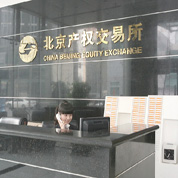An expert’s view on Chinese equities: is it time to step back in
Issue:
June 2012, Vol.7, No.6
Tags:
Equities

We have been bearish on the Chinese equities for the past two years, judging that embedded risk premiums were far too thin to offset the underlying structural risks. This proved to be the right call, with the MSCI China losing 13.1% over the last year, and 5.3% over the past over years, according to price index, as of April 30, 2012, underperforming the MSCI World index by 8.5% and 9.1%, respectively.
We have now reached the point, where the Chinese equities are starting to look cheap. Their price to 10-year average earnings stands 22% below its historical average, close to the February 2009 lows, as indicated in Chart 1: Chinese equities valuation and leading economic indicators.
At the same time, price dynamics are becoming more supportive: the Chinese equity total return index ended April above its 10-month moving average for the fourth consecutive month which, according to the Faber momentum model, is a strong positive signal. Moreover, the Chinese leading economic indicators, a fair signal of future equity valuation, as shown by Chart 1, have stabilized and now seem to be turning up, from levels much more depressed than a year ago.
Finally, inflation pressures have abated, with the Chinese year-on-year CPI down to 3.6% at the end of March compared to a 6.5% peak in July 2011, providing room for monetary authorities to normalize their policy, and probably even allowing for some easing. This stands in stark contrast to the September 2010 to July 2011 period, when Chinese officials were forced to tighten in the face of socially-risky inflationary pressures, raising the prime lending rate from 5.3% to 6.6%.
“All told, Chinese equities are an attractive opportunity, and the time may have come to step back in – albeit while closely monitoring downside risks on both the inflation and economic fronts.”
As shown by Chart 2: Chinese MI money supply growth versus consumer price, the balance of risks is an increase in monetary liquidity growth, especially in the context of a European downturn and negative economic surprises globally. Increased monetary liquidity will generate asset price inflation, as has been the case elsewhere. That said, supply curve inelasticity does make the Chinese real economy easily prone to inflation, constraining the fiscal authorities in their liquidity injections. Any hint of higher prices would be a negative signal for equities.
In making this call for stronger performance of Chinese equities over the coming months, we nonetheless keep in mind the underlying structural fragilities of the Chinese economy. The country faces a tough transition over the coming years, from investment- to consumption-driven growth.
As Chart 3: Chinese savings, investment and private consumption as a percentage of GDP, shows, the Chinese fixed capital formation has not only accounted for a huge share of GDP, standing at 45% at the end of 2010 versus 15% in the United States and 19% in the eurozone, it has also been rising continuously for the past 30 years. Likewise, gross savings have increased from an already high 36% of GDP in 1982 to 53% at the end of 2010. This contrasted with 11% in the United States and 20% in the eurozone.
This has weighed on household consumption, which has declined steadily from 49% of GDP 30 years ago to a 35% at the end of 2010, contrasting with 71% in the United States and 58% in the eurozone. Unfortunately, demographic challenges and a massively centrally planned economy are big hurdles to a smooth transition, itself made all the more urgent by developed countries’ need to reduce their deficits and their imports of Chinese goods.
All told, Chinese equities are an attractive opportunity, and the time may have come to step back in – albeit while closely monitoring downside risks on both the inflation and economic fronts.
This report is based on Lombard Odier’s research materials.












 Web design,
Web design,